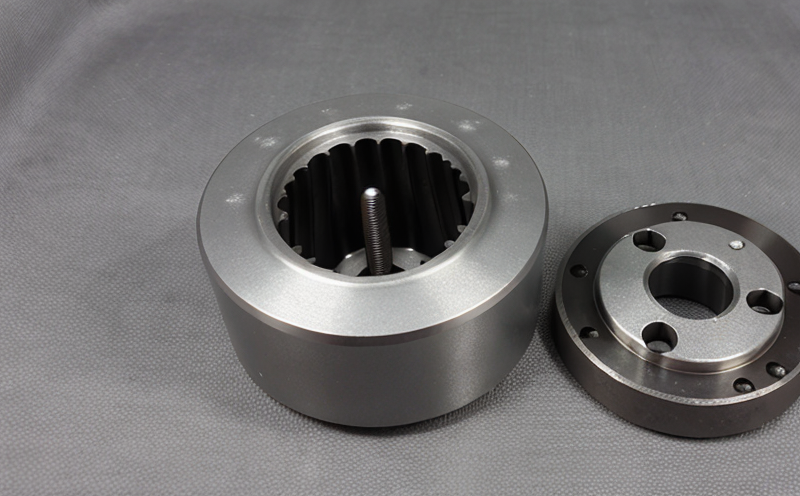ISO 3369 Density Measurement by Archimedes Principle
The ISO 3369 standard provides a method for determining the true density of powders and granular materials using the Archimedes principle. This technique is widely used in metallurgy, particularly for powder metallurgy and additive manufacturing (AM) applications where precise material characterization is essential.
Understanding the density of powders and materials can influence numerous aspects such as processing efficiency, mechanical properties, and performance in end-use products. For instance, in powder metallurgy, accurate knowledge of powder density helps optimize compaction forces during forming processes like forging or die pressing. In additive manufacturing, it ensures that the material is correctly deposited layer by layer without any inconsistencies.
For quality managers and compliance officers, knowing the density can help ensure consistency across batches, which is critical for maintaining product standards. R&D engineers often use this test to identify optimal processing conditions or to compare different raw materials. Procurement teams might rely on it to verify that suppliers meet specification requirements accurately.
The testing process itself involves placing a sample of the powder in water and measuring its weight increase as it is submerged. The true density is then calculated based on the volume displacement. This method accounts for both the bulk density (the mass per unit volume including voids) and the particle density (mass per unit volume without voids).
Proper specimen preparation is crucial; this includes ensuring uniformity in particle size distribution and minimizing contamination from external substances. The choice of water temperature also plays a role since it affects buoyancy forces acting on the sample.
The equipment required typically consists of a balance accurate to at least 0.1 mg, a container capable of holding the sample without spilling when immersed, and a timer. A computer system for data recording and analysis might be used depending on laboratory setup.
| Step | Action |
|---|---|
| Weigh an empty container | Ensure the balance is zeroed before placing the container. |
| Fill the container with the sample | Use consistent methods to fill and tap down if necessary, ensuring no air pockets are created. |
| Weigh the filled container | Maintain accuracy by minimizing handling between weighings. |
| Immerse the container in water | The level of immersion should allow for complete displacement without spilling the sample. |
| Record the weight change | Note any additional mass due to absorbed moisture if applicable. |
| Calculate density | Apply Archimedes' principle formula: density = (mass of container + sample - mass of empty container) / volume displaced by the submerged sample. |
Accurate measurements require careful attention to detail during each step. Any deviation from standard procedures could lead to erroneous results which may affect decision-making processes significantly.
Scope and Methodology
| Step | Action |
|---|---|
| Weigh an empty container | Ensure the balance is zeroed before placing the container. |
| Fill the container with the sample | Use consistent methods to fill and tap down if necessary, ensuring no air pockets are created. |
| Weigh the filled container | Maintain accuracy by minimizing handling between weighings. |
| Immerse the container in water | The level of immersion should allow for complete displacement without spilling the sample. |
| Record the weight change | Note any additional mass due to absorbed moisture if applicable. |
| Calculate density | Apply Archimedes' principle formula: density = (mass of container + sample - mass of empty container) / volume displaced by the submerged sample. |
Eurolab Advantages
At Eurolab, our expertise in material testing ensures that we provide reliable and accurate results for ISO 3369 density measurements. Our state-of-the-art facilities are equipped with precision balances capable of measuring down to 0.1 mg, ensuring minimal error margins.
We employ highly trained technicians who adhere strictly to international standards during every test procedure. This consistency guarantees that your data aligns perfectly with industry benchmarks.
The turnaround times for our tests are typically fast, allowing you quick access to crucial information needed for project progress or regulatory compliance.
Our commitment extends beyond just performing the tests; we offer detailed reports tailored specifically towards your needs, providing insights into not only the density but also potential variations and their implications.
International Acceptance and Recognition
- The ISO 3369 standard is widely recognized across industries including metallurgy, manufacturing, and research institutions worldwide.
- Many countries have adopted this method as part of their national standards for material testing.
- It is frequently cited in international trade agreements ensuring compatibility between trading partners.
- The methodology has been endorsed by leading professional bodies such as the American Society for Testing Materials (ASTM) and International Organization for Standardization (ISO).
- Universities incorporate this technique into their curricula, reinforcing its importance within educational frameworks.
- Regulatory agencies often require compliance with ISO 3369 when approving new products or materials.





